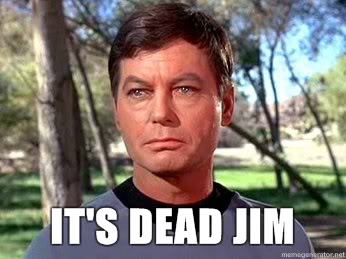svetz
Works in theory! Practice? That's something else
My desktop hasn't been turning on reliably when I hit the start button. As the button is original equipment and the guts have been replaced a few times figured it was time for a shiny new button so I wouldn't have to keep replaying the stabby scene from Game of Thrones with the PC button.
WTF? Checked the ATX power switch , checked it was on the right pins
, checked it was on the right pins ... hmmm... flipped everything off and blew out all the dust.
... hmmm... flipped everything off and blew out all the dust.
 Reassembled and without bolting everything together hit the power button.
Reassembled and without bolting everything together hit the power button.
...and then suddenly while I'm staring at it...it boots up. Shut it down, hit the switch and it boots up. Repeat, all okay.
So I put it all back together. It doesn't boot. Then after a few minutes while I'm wondering wtf, it boots up again all on it's own. Shutdown and restart all okay three more times in a row.
So.... suspect there's something odd going on yet... possibly with the motherboard?
| Dug the old button out (held in with hotglue) and the old button was really sad. Reminded me of the blues-mobile at the very end of the movie. Stuck the new button in, glued it, put the lid on, and pressed the button. Nothing. Nada, zilch, niente, nichts! 
| 
|
WTF? Checked the ATX power switch

GRRRRRR!!!!
...and then suddenly while I'm staring at it...it boots up. Shut it down, hit the switch and it boots up. Repeat, all okay.
So I put it all back together. It doesn't boot. Then after a few minutes while I'm wondering wtf, it boots up again all on it's own. Shutdown and restart all okay three more times in a row.
So.... suspect there's something odd going on yet... possibly with the motherboard?



